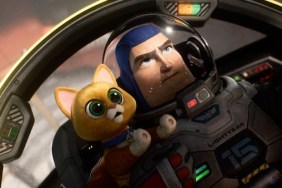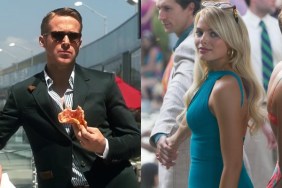As Daniel Craig just pointed out, product placement is one of the most unfortunate necessities in modern filmmaking. Movies are expensive, damn it, and studios are always looking for ways to cut costs without cutting their films’ budget. If you had the option to either show James Bond using a Vaio computer or lose the imploding building at the end of Casino Royale, what would you do? He’s got to use a computer at some point anyway, right?
Product placement only becomes a serious problem if the film goes out of its way to sell you something. The Fantastic Four: Rise of the Silver Surfer is one of the most egregious offenders in recent years, putting the Dodge logo on the Fantasti-Car and raving about its hemi. Then again, we’ve seen military leaders with Coca Cola vending machines in their office (Rambo: First Blood Part II) and Superman flinging bad guys into a Marlboro truck (Superman II) so maybe we shouldn’t have been surprised.
There are lots of places to go to find lists of product placement done very, very badly. But what about when a movie does it well? Here’s our list of The Top Ten Movie Product Placements, the ones that didn’t really piss us off, and/or actually sold us a product or two.

Most of the films on our list are playing coy with product placement, or at least seamlessly integrating it into a real narrative. Mac and Me, on the other hand, is one of the most shameless commercial shills ever put on camera, and you almost love it for that. The film, a simple E.T. knockoff, follows the adventures of a “mysterious alien creature” (MAC) who befriends a disabled boy (Jade Calegory), who in turn keeps him hidden from the spooks at NASA. In order to keep “Mac” alive, our heroes have to feed him nourishing Coca Cola and Skittles, and that would be bad enough, but at one point an impromptu musical number breaks out at McDonald’s. For years we kept asking our parents to go to McDonalds, just because we thought that sort of thing really happened once in a while. The film plays like an unintentional joke, but at least it’s a funny one. Oh, and according to director Stewart Raffill, the profits mostly went to McDonald’s charities, so it’s not really as evil as it sounds.


One of the most mind-blowing success stories of the modern age, the little independent romantic comedy My Big Fat Greek Wedding somehow turned into a blockbuster, earning $241 million domestically despite never earning the #1 spot on any given weekend. Windex must have been pleased. The film, about a girl from an oppressively Greek family who just wants to marry a normal guy (it’s hardly Gone with the Wind, really), name checks Windex on multiple occasions as the patriarch’s cure-all for any given situation. At the end of the film, Nia Vardalos gets a zit on her wedding day. The funny thing is, so did her fiancé (“Sex and the City’s” John Corbett), but the damned thing went away as soon as he put Windex on it. The mighty cleanser that is Windex proved that he could belong in her crazy family, and saved the day. Maybe we should buy some of that there Windex, hmm?


Although The X-Files promised the answer – or at least some answers – to series creator Chris Carter’s many ongoing mysteries, the film wound up feeling like just another conspiracy episode, albeit with a much higher budget. The film didn’t turn out to be a cultural milestone, but you know what did? Independence Day, another 20th Century Fox production from two years prior, also about an alien invasion, but without any pretense towards greater significance. While featuring real movie posters and marquees is common on screen (Fight Club features a movie theater showing Seven Years in Tibet, also starring Brad Pitt), The X-Files takes the piss out of the product placement practice… by actually taking a piss on it. Alien-enthusiast Fox Mulder (David Duchovny) goes out of his way to drain the lizard on one of the most popular sci-fi movies of all time, and it is a thing of beauty.


We’re going to spoil the end of Back to the Future Part II here, but if you haven’t seen it yet, we’re pretty sure the fault is on you. At the end of Robert Zemeckis’s endlessly inventive sci-fi series (already deluged in product placement, ranging from Texaco to Calvin Klein), Doc Brown (Christopher Lloyd) is struck by lightning in his time travel Delorean, disappearing to an era unknown. Unknown, that is, for about two minutes. No sooner does Doc Brown disappear than a Western Union delivery man arrives with a package they’ve been holding for 70 years. It’s a great plot point, and it makes sense since Western Union was actually around back then, but man-oh-man does it inspire confidence in Western Union’s dedication to their customers.

The Wizard, let’s be honest, is a really long commercial for Nintendo. Plugs for lame-brained products like The Power Glove fall flatter than a steamrolled pancake, and the finale is nothing more than a preview of Super Mario Bros. 3. But over the years it’s developed a faithful cult following, partially because of its audacity, partially because director Todd Holland took the film surprisingly seriously, but mostly because, as kids, video games really meant that much to us. They were an intellectual and social pursuit, infecting our conversations and competitions with our peers. Treating a video game competition like it was Rocky felt right to many of us, and introducing Super Mario Bros. 3 as a reveal in a motion picture was actually a big honking deal. The damned film even gave away some of the game’s secrets, something advertisements never, ever do. Yeah, they were trying to sell us Nintendo products. But you know what?
Sold.


Home Alone 2: Lost in New York is perhaps best known today as a note-by-note remake of the first one (a reputation now usurped by The Hangover Part II). But aside from the whole “lost in New York” angle, the film did introduce one new element to the franchise: the TalkBoy. It’s easy to forget now, in this age of smart phones, that a personal, varying speed recording device wasn’t a ubiquitous piece of machinery in the early 1990s, especially to kids. But seeing little Kevin (Macauley Culkin) use the Talkboy to outwit his elders throughout Home Alone 2 made every single kid in the country want one. The weird part was, this was product placement for a product that didn’t exist yet: by the time Tiger Electronics recognized the actual demand for the non-existent Talkboy and produced a retail version, a whole year had passed since Home Alone 2’s release.

Overlooked upon its initial release, Demolition Man gradually gained a cult following as an action film way ahead of its time. Foreseeing the future as a whitewashed place eroded by censorship and superficiality, the world of Demolition Man, circa 2032, is populated by a new generation whose artistic nostalgia is limited to advertising jingles, which sounds increasingly plausible. (Be honest: you know the words to the “Juicy Fruit” song, don’t you?) In addition to musical shout outs to Oscar Mayer and The Jolly Green Giant, one of the film’s central gags revolves around the unseen “Franchise Wars,” which left Taco Bell as the only restaurant in the country. Sandra Bullock does a rousing rendition of happy slaps at the very thought of a chalupa, and we’re totally okay with that, because its funny (and acerbic) as hell.


There was a time when “Saturday Night Live” movies didn’t completely suck. Hell, The Blues Brothers was Ingmar Bergman’s favorite film. Penelope Spheeris turned Mike Myers and Dana Carvey’s popular sketch, about two hard rock-loving goofballs with a public access TV show, into a minor comedy classic that invaded the popular culture with its rockin’ soundtrack and many quotable scenes. In one such segment, Wayne (Myers) and Garth (Carvey) are told by their new producer that they’ll need to submit to product placement now that they’re on a network. Their objections are genuine, but sprinkled with rampant product placement of their own for products like Nuprin (“Little, yellow, different”) and Pepsi (“The choice of a new generation”) and Reebok (“It’s like people only do things because they get paid, and that’s really sad.”)
Years later, a little film called Josie and the Pussycats turned this one joke into an entire feature film, simultaneously criticizing product placement while giving in to its every whim. It’s got a following now, as well it should, but we prefer the Wayne’s World version, which doesn’t play the gag out long enough to ever feel like a hypocrite.


We’re not sure if David Lynch actually got any money from Pabst Blue Ribbon for his over-the-top promotion in Blue Velvet, considered by many to be his finest film, but they at least owe him a twelve pack. The movie stars Kyle MacLachlan as a mild-mannered suburban kid who becomes embroiled in a kidnapping and sexual extortion plot involving a victimized Isabella Rossellini and Dennis Hopper, playing evil personified. Finding himself on an uncomfortable outing with Hopper, MacLachlan has the sheer audacity to order a Heineken. Hopper’s brand loyalty-inspired outburst has since become the stuff of legend: “Heineken? F*ck that sh*t! Pabst Blue Ribbon!” The formally-maligned brew has been legitimized by pop culture enthusiasts ever since. (Ever had a “Dennis Hopper Martini?” It’s a mug of Pabst with a green olive in it. Delicious.)


Pixar’s first film, now recognized as a classic, was Toy Story, a film about what your toys are up to whenever you’re not in the room. It’s a classic concept (in fact, The Jim Henson Company told a suspiciously similar tale in their TV special “The Christmas Toy” in 1986), and it works because as children we all projected personalities onto our playthings. Sure, the Toy Story movies made Barbie Dolls and Potato Heads and Army Men into walking, talking characters guaranteed to boost sales, but they did so with so much wit and intelligence that we’re forced to thank them for it. Toy Story doesn’t feel like product placement, it just feels “right.” Best. Product Placement. Ever.
What product placement actually worked on you…?





